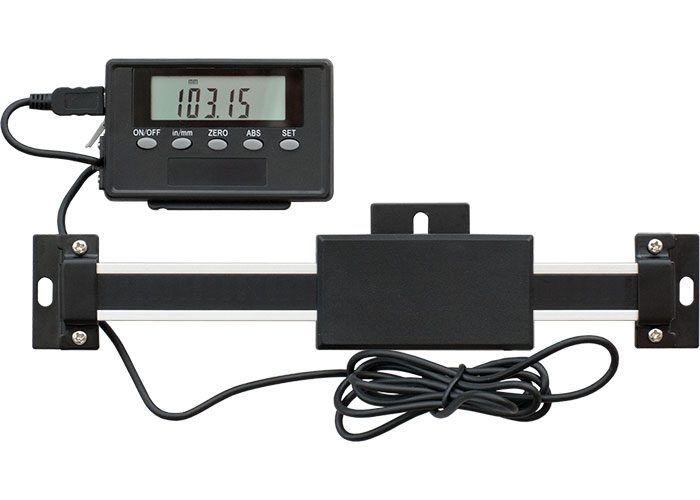Almost a no-brainer, a DRO is so useful that no mill should be bought without one. Doesn’t need to be anything fancy, I fitted mine with a pair of these, and was amazed at the difference they made! Mine came from ArcEuro, other suppliers available.
DRO on a mill fixes a lot of human error problems. With dials it’s easy to lose count when turning the hand-wheels multiple times, or to get confused when reversing, and be caught out by backlash. Apart from saving the operator from silly mistakes, even a basic DRO like mine does a lot more, notably setting reference points and measuring interchangeably in either metric or imperial.
Dial Lever Indicator and edge finder. A wiggler set is mildly useful, though I often use a dressmakers pin stuck in a blob of plasticine. Rubber mallet for tapping the vice into alignment. Home made aluminium plate on a handle to deaden the hammer blows needed to release the drawbar. Toothbrush to remove swarf from T-slots. A variety of T-nuts, home-made parallels, spacers, jigs and v-blocks. I bought a set of centre-drills to locate holes accurately before twist-drilling, and with hindsight think spot-drills are ‘better’, maybe.
Much depends on what you do. I soon realised I needed a boring head and a rotary table (with headstock, though that doesn’t get used much). Also, a small drill chuck that could be held in an ER collet. Less vital, angle-plate. I bought a clamping set which is too big for most jobs but wonderful for big ones. Several tools become desirable when you need them; though I don’t use my Stevenson’s Blocks often, they save a lot of time! I don’t do enough repeat threading to justify a tapping attachment. For a long time I used a digital caliper to measure bores, then decided I did it often enough to justify a bore gauge set. I also used a fly-cutter for years before finally coughing up for a shell cutter: again, not used often, but a real time-saver when it is. Though entirely metric in theory, I have to clamp enough inch based objects in my ER collets to be a nuisance. Although metric ER collets have the necessary range, it’s easier to use collets close to the right size, so I’ve invested in a set of common Imperial collets. Worth it to me, not everyone else!
Biggest waste of money was a flood coolant system, even though it works well. Mine is rarely used, partly because it’s so messy, and partly because I don’t spend hours hacking steel! It’s not worth the hassle for small jobs.
I’m not against sets. Although it rankles when parts of a set don’t get used due to every right-thinking Model Engineer’s extreme unwillingness to spend money, I’ve found most things in sets do get used – eventually. And when the need arises, there it is, in the cupboard, ready to go Experienced machinists dislike sets because they know what they need, forgetting that beginners don’t! Not much harm I feel in splashing out on a set for educational reasons.
Dave
old mart.





